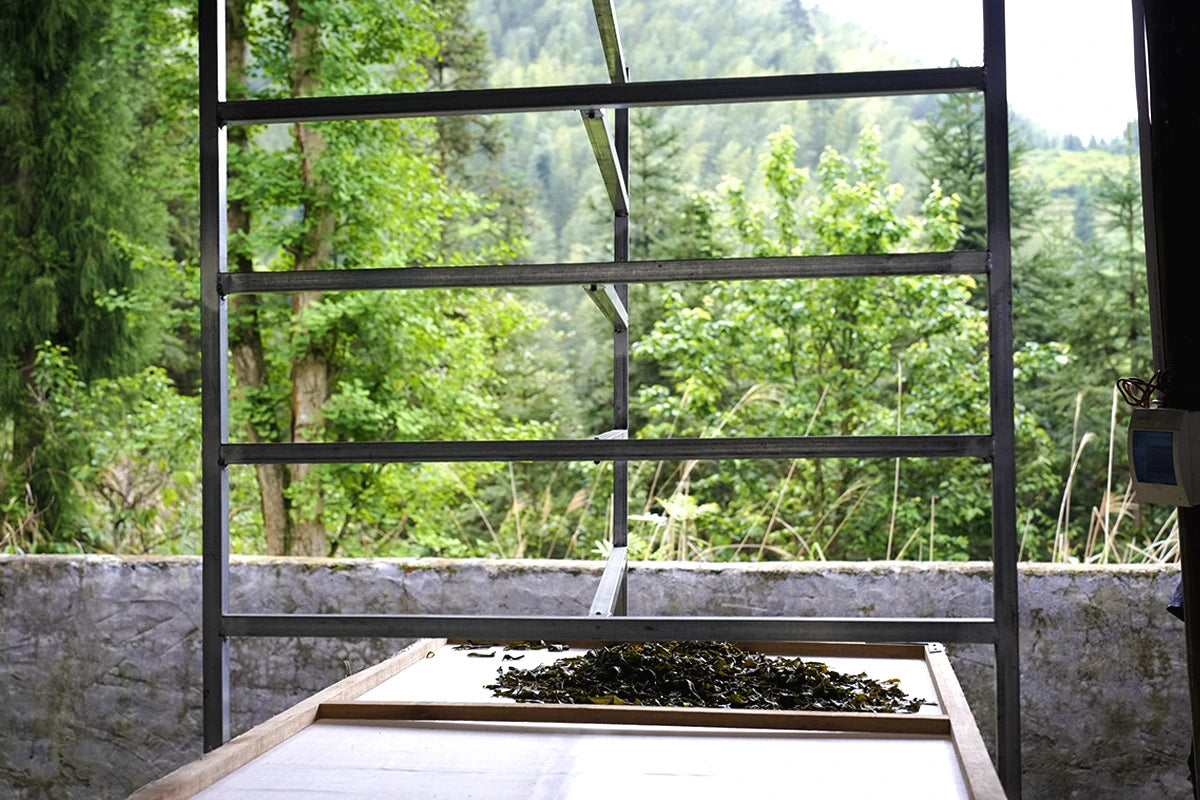The color of loose leaf oolong tea falls between the freshness of green tea and the richness of black tea. Upon tasting, it leaves a long-lasting sweet aftertaste that is both refreshing and delightful.
What does semi-oxidized tea mean?
This process changes the color, aroma, and taste of the tea leaves, and is a key factor in forming the unique characteristics of different loose leaf tea (such as loose leaf green tea, loose leaf oolong tea, and loose leaf black tea).
Semi-oxidation of tea means partial oxidation, but it does not strictly imply that 50% of the tea leaves are oxidized while the other 50% are not.

Is oolong tea semi-oxidized tea?
Lightly oxidized loose leaf oolong teas, such as the Light Aroma TieGuanyin, have a tea liquor color and taste that are closer to green tea, offering a more refreshing flavor.

On the other hand, heavily oxidized loose leaf oolong tea, such as Da Hong Pao and Oriental Beauty, have a tea liquor color and taste that are closer to black tea, providing a richer flavor.
How do you oxidize oolong tea?

The specific process involves placing the fresh leaves in bamboo sieves or bamboo tubes and shaking them to bruise the leaves. After shaking, the leaves are allowed to rest, during which the main oxidation reactions occur. This shaking and resting process is repeated multiple times. This unique process is specific to loose leaf oolong tea and is not used for other Chinese tea.

The key to semi-oxidizing loose leaf oolong tea lies in the intensity of the shaking and the duration of the resting periods. Adjusting these parameters will change the level of oxidation in the oolong tea. This is the core secret behind the rich and diverse flavors and aromas of oolong tea, and it is also the key technique in producing the best oolong tea.

Find more loose leaf oolong tea with our Oolong Tea Sampler.>>>
Other questions about oolong tea
1. Is oolong tea good for the skin?
Loose leaf oolong tea is rich in tea polyphenols and other substances that have strong antioxidant properties. These can help remove free radicals and protect skin cells from damage to some extent.
The tea polyphenols and other compounds in loose leaf oolong tea have anti-inflammatory properties, which can reduce skin inflammation and help alleviate certain skin issues, such as acne and eczema.
2. What season is oolong tea suitable for?
Loose leaf oolong tea is especially suitable for autumn. In autumn, the lingering heat of summer fades, and the cold of winter begins to set in. Traditional Chinese medicine emphasizes the harmony between internal and external balance, so oolong tea, which lies between warm and cold, is particularly suitable for drinking during the autumn season.

3. Is it okay to drink oolong tea everyday?
In regions of China where loose leaf oolong tea is produced, such as Guangdong, locals consider loose leaf oolong tea a daily beverage and cannot go a day without it.
When drinking loose leaf oolong tea, it is important to avoid drinking it too strong, too hot, or on an empty stomach. This way, you can enjoy the deliciousness of loose leaf oolong tea more healthily.

4. Why is oolong tea so hard to find?
There are several possible reasons why oolong tea is not as popular. Oolong tea was developed much later than green tea and black tea, and its production process is more complex compared to green tea and black tea.
Find more Chinese tea with our Chinese Tea Sampler.>>>
Chinese tea comes in various styles, each with its unique characteristics. In addition to oolong tea, there are many other best loose leaf tea worth exploring, such as green tea, black tea, dark tea, and floral tea. Moreover, there are niche varieties like wild tea. If you want to try Chinese organic loose leaf tea, you can look within the range of wild teas. Chinese tea also makes a great gift in the form of tea gift sets for family and friends, offering both deliciousness and health.
As people pursue a healthy lifestyle, Chinese tea, as a natural and healthy beverage, is sure to gain more popularity in the future. We hope that more people will appreciate the wonders of Chinese tea and join in preserving and promoting this ancient and precious tea culture.











































































